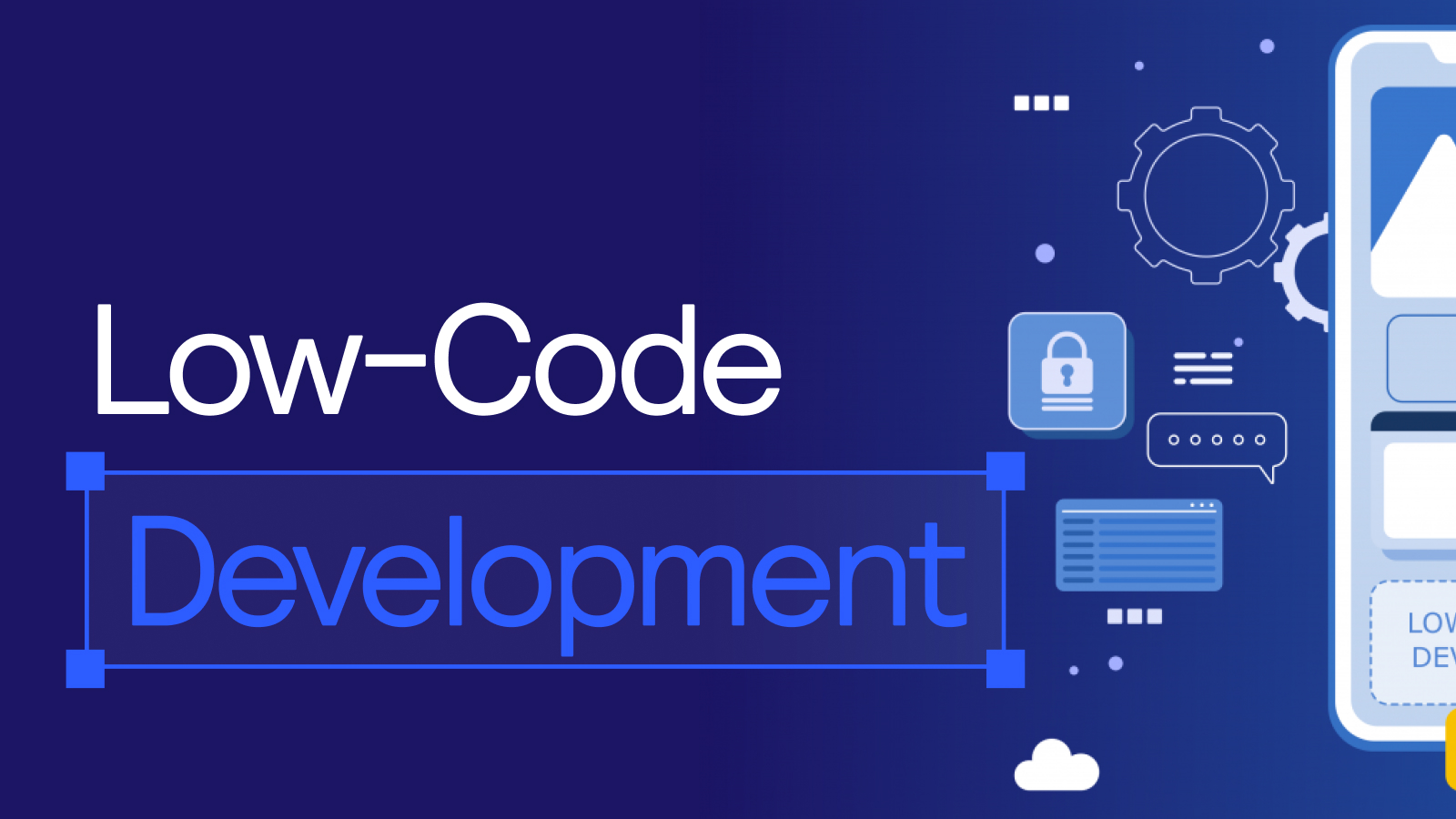Turbo IRC
Turbo IRC is a cutting-edge software suite offering fast, secure, and innovative applications for Windows, Android, iOS, and the web, designed to enhance communication, security, and productivity.
About Us
Fast, Secure, and Innovative Applications for Windows, Android, iOS & Web
Our Solutions
Windows Applications
Our powerful Windows applications provide seamless performance, advanced features, and intuitive user interfaces.
Mobile Apps (Android & iOS)
Stay connected on the go with our high-performance mobile applications, optimized for speed, security, and usability.
Web Tools & Cloud Solutions
Access cutting-edge web applications and cloud-based solutions designed for flexibility, scalability, and efficiency.
Developer & Research Tools
Enhance your development workflow with our advanced tools tailored for programmers, researchers, and tech enthusiasts.
Cybersecurity & Encryption Solutions
Protect your data with state-of-the-art encryption and security solutions designed for modern digital threats.
Data Analytics & AI Integration
Leverage AI-powered analytics and smart data tools to gain insights and optimize decision-making.
Why Choose Turbo IRC?
Innovative Technology
Cross-Platform Compatibility
High Performance
Security First
Cutting-Edge Software Solutions for Every Platform!
Experience cutting-edge software solutions designed for Windows, Android, iOS, and web, delivering speed, security, and innovation across every platform!

TESTIMONIALS
What People Are Saying
I’ve used many communication and productivity tools, but Turbo IRC stands out with its speed, security, and seamless integration across devices.
Articles
Recent Posts
Adapting to Change: How Software Evolves with User Needs
The driver of digital transformation in any industry is software. It is not only the technology that is driving its speed of evolution, but also the constantly evolving demands of the users. The applications today are more sophisticated, personalized and secure in reaction to the way in which millions of people interact with them. This is how the adoption of software to the changing needs of users occurs, and the reason why this development is a characteristic feature of successful products in 2025.
User-Centric Innovation and Continuous Feedback
The direction of software development has shifted radically to user-focused design with emphasis on intuitive interface, access and customer experience. Organizations have taken to permanent feedback loops- collecting insights based on real-time user data, the analysis of apps usage, and the back-office feedback systems. This nimble strategy implies that features, fixes, and improvements are made available to the end users within a matter of days or weeks. The Total Experience (TX) is taking shape: the combination of user, customer, and employee feedback in terms of holistic design changes. Consequently, software has ceased to be a matter of releases, but rather it is a continuous, gradual improvement that is structured in response to the demands of the users.
Personalization and Smart Automation
software personalization is undergoing revolution by AI and machine learning. High-level algorithms are used to interpret behavior, preferences and context to offer personalized recommendations and dynamic interfaces. E-commerce, health solutions, and entertainment apps will provide individualized content and services, improving their engagement and retention. It is now possible to shape products to their own processes with low-code/no-code platforms and vibe coding, where even non-programmers can build products by shaping them to their own use. This democratization increases the rate of adaptation, where a prototype can be developed quickly and features directly affected by the end user.
Security, Trust, and Ethical Evolution
With the increase in the dependence of the users on software, issues of security and privacy become more eminent. The developers are integrating positive security controls into the development pipelines (DevSecOps), and automating threat identification and compliance across the lifecycle. Good AI architectures and clear privacy guidelines make software reliable and trustworthy. This change is the direct reaction to the fact that users require their data protection, ethical practices in AI, and compliance with the regulation. We see these requirements across so many products and services. Whether it is privacy on a mobile app that allows users to search for free sex near me, or an online banking service which handles sensitive user data, the requirements for safety and ethical practices only continue to grow and become more important.
Modular Architectures and Scalability

The shift towards modular and composable software architectures enables businesses to respond to changes in software as quickly as possible. Teams refine features or add them without rewriting systems by separating applications into replaceable modules. The flexibility enables organizations to react immediately to feedback, market changes or regulatory changes- staying relevant and cost saving. These types of architectures facilitate integration with new technologies and APIs, which allow cross-platform compatibility and futureproofing digital products.
Accelerated Deployment and Ongoing Improvement
The current software development focuses on speed. Automated testing, AI-aided debugging, and continuous integration reduce the deployment time to make sure that millions of users can receive updates in the most effective way. This agility reduces the downtime and ensures that software fixes and features are aligned with the real world requirements. Technology teams consider success as being able to create on the fly rather than create beforehand.
The software development no longer consists of the adoption of new tools alone, but rather in the response to the needs of the users in a purposeful manner. This is a dynamic, collaborative feedback approach, which makes digital products stay relevant, secure, and valuable, which both benefit the end user and business in a world of constant flux.
Why App Stability and Reliability Matter More Than Ever
The blaze of mobile applications and platforms as clouds has disrupted the way we work, socialize and amuse ourselves. As the demand of users is to experience seamless apps, and the competition among app developers is fierce, stability and reliability have turned into the main characteristic distinguishing the market leaders and the apps that are forgotten after the download. Users demand every tap, swipe and transaction to be perfectly operational more than ever before, and, therefore, in 2025, the stability and reliability of apps will be the most important aspects of a business.
User Expectations: Zero Tolerance for Instability
The current users are almost intolerant of crashes or bugs. More than 82 percent of users in 2025 believe that stability is very important, and 63 percent of users uninstall an application within three crashes or freezes. The negative reviews and complaints on social media explode and lead to the decreased app rates and reduced visibility. Modern users are picky, having plenty of alternatives, even the slightest instability can deprive the service of clients within a few seconds.
Business Impact: Ratings, Retention, and Revenue

Stability of the apps is not a mere technical measure, it is a rating and revenue driver. Industry standards have now put a minimal requirement of 99.95 percent crash-free session rate on apps, which the most performant apps are now setting at 99.99. Any lower can cause a ratings cliff, and apps will lose their store visibility when they have fewer than 3.0 stars. According to data, crashes directly result in 71 percent of uninstalls of apps, loss of paying users, and stalled growth. Stability is directly correlated with retention, revenue and reputation.
Holistic Stability: Beyond Just Crash-Free
Reliability does not simply mean that it will not crash. The most useful apps currently are tracking the crash rates along with Application Not Responding (ANR) errors, out-of-memory (OOMs), and app hangs. A 2025 median benchmark for ANRs, 1.12 OOMs and approximately 100 UI freezes per 10,000 sessions are figures that can easily ruin user satisfaction when not checked properly. The strong crash analytics and device coverage are now standard practices, whereby problems before they can reach the user are fixed.
Technical Challenges and Best Practices
It is no longer enough to test it on flagship devices. The variety of OS versions, device fragmentation, and unrealistic real-world conditions require a wider scope of testing and more intelligent automation. Best development teams adopt continuous integration (CI), automatic crash detection and quick bug-fixing. Continuous revising and maintaining deal with the long-term reliability, maintaining the pace with new devices, and security needs of users. It is essential to proactively track such indicators as mean time to resolve crashes (MTTR).
The Path to Long-Term Success
Stability and reliability are not something an investor can invest in but a basic element in an era that is dominated by speed in innovation and global applications. First in User Experience Apps do not just achieve high ratings and retention, but market share and customer trust. To business and developers, ensuring the system is crash-free and operates with a wide range of devices and constant maintenance are the attributes to success in the long-run in 2025.
What Makes Software Truly Innovative in 2025?
Reimagining User Experience
By 2025, software innovation starts with a revolutionary attitude to the user experience. The new breed of applications is centered on dynamic, smart interfaces which are AI-driven and whose functionality is based on how a user interacts and engages with the device. Smart user journey mapping and easy onboarding are substituted by cumbersome menus and confusing settings, allowing advanced functionality to be accessible to all.
AI and Automation at the Core
Artificial intelligence and automation are not some extra features, but are the core of modern software in 2025. The products are a combination of natural language processing, generative models, and predictive analytics to allow the user to work smarter and more efficiently. Self-optimizing systems, automated workflows, and proactive assistants transform industries as diverse as healthcare, design, or logistics, and eliminate manual work and errors.
Hyperconnectivity and Integration
Software innovation will flourish when application can communicate across platforms The most innovative products eliminate silos and provide secure API-based connectivity to wearables, cloud ecosystems, and more. The combination of these solutions enables businesses and individuals to use a variety of data and insights to make better decisions and become more productive in general.
Security and Privacy by Design
True innovation helps you handle digital risks at the root. Modern applications adopt privacy-focused design, which incorporates end-to-end encryption, zero-trust models, and on-demand threat intelligence. Transparent data use policies are baked by the developers, and users gain control over how their personal data is accessed, and AI-driven security is alert to emerging threats.
Flexibility and Low-Code Development
The latest software in 2025 is a democratized creation. Low-code and no-code enable non-technical users to access powerful customization environments, and agile infrastructure allows quick iteration and deployment. This accessibility allows businesses and individuals to swiftly change the programs to match the changing needs- a culture of experimentation and constant improvement.

Sustainability and Ethical Focus
Innovation is influenced by ethical considerations because consumers and businesses require that companies be more open and responsible. Software is becoming friendlier to the environment with more and more resource-saving algorithms and carbon-friendly operations. Open-source collaboration and fairness auditing is the standard, making sure there is equity in access and responsible usage of the emerging technologies.
Immersive Technologies
AR, VR, and mixed reality platforms change the way people engage with the digital world. By 2025, software will merge physical and digital environments to allow everything, including remote work in lifelike 3D offices, immersive learning and entertainment experiences. These developments stimulate further insertion and imaginative novel potentials of work and play.
Global Inclusivity
The most innovative software places a priority on accessibility and localization, being able to reach users irrespective of national origin, language, or level of ability. Digital tools can translate across languages, speak with voice control and adapt to different layouts to support a diverse population with reduced barriers and bridged gaps across geographies.
Continuous Learning and Adaptation
Lastly, in 2025, the software is characterized by constant development. Feedback loops powered by machine learning allow applications to improve and evolve as time goes on, taking in the input of their users and responding to trends. Rather than releasing programs, programs become more intelligent and more efficient, understanding needs and creating new possibilities.
In short, the software will be truly innovative in 2025 with a combination of technology, human-centric design, security, ethics, and adaptability that empower the users and revolutionize the industries in a never-seen-before manner.
The Role of Cloud Sync in Seamless User Experiences
Introduction: The Ubiquity of Cloud Sync
Cloud sync serves as an essential backbone of contemporary digital existence by unifying files with settings and data across different phones and laptops and tablets. Digital tasks that span different devices and locations operate with seamless continuity because cloud sync provides the silent mechanism for users to access their work on any device.
Effortless Accessibility Anywhere, Anytime
The fundamental purpose of cloud sync is to ensure accessibility. The real-time file and data updates enable users to switch between devices without needing to transfer files manually. Users can complete work documents between their work and home environments and their phone images will immediately show up on their desktop photo gallery. Continuous system availability acts as a fundamental element for delivering seamless user experiences because it enables users to stay productive while maintaining connectivity across all locations.
Cross-Device Consistency and Reliability

A seamless user experience requires that users have access to the most recent data regardless of the device they use. The system of cloud sync ensures data consistency by instantly updating all connected devices with changes made on one device. The technology proves essential in collaborative work settings since multiple team members can work on a single project together while accessing the current file version without manual exchanges and data overwrites.
Enhanced Collaboration and Workflow
Cloud sync serves as a transformative technology which revolutionizes collaborative projects and teamwork activities. Users maintain real-time access to comment and edit and suggest changes from any location across the world. Version control features provide users with the ability to track edits and restore earlier versions when needed while maintaining that everyone is working from the same version. The use of cloud technology prevents organizations from encountering delays that result from moving files manually or from using email attachments or from dealing with outdated document versions that spread among stakeholders.
Real-Time Updates and Personalization
Cloud sync stands out because it provides immediate real-time updates as its main benefit for users. Through instant deployment applications deliver the most current content along with feature enhancements and bug fixes to users without any hassle. The analytical capabilities of cloud infrastructure enable applications to deliver personalized experiences through profile syncing and behavioral data analysis which suggests content and remembers user preferences throughout all user interactions.
Scalability and Performance
The design of cloud sync enables limitless growth in its capabilities. The cloud-based synchronization of applications allows them to manage sudden increases in user demand because resources automatically scale up in real time to maintain service responsiveness. App reliability improves through this flexible design which produces faster loading speeds and continuous service delivery that results in higher user satisfaction.
Resilience, Security, and Peace of Mind

Modern cloud sync solutions implement strong security measures along with encryption and backup systems which defend user data. The cloud allows users to access and recover their files and data even after their device loss or malfunction or cyberattack. The reliability system provides users with confidence about their digital safety while ensuring their digital life remains uninterrupted.
Integration with Offline Access
The complete seamless experience connects both online and offline points. Several applications use dual approaches by saving fundamental data locally for offline usage before syncing all changes to the cloud network when internet connectivity returns. Users can maintain work or content access offline because their cloud updates will synchronize automatically later to maintain continuous productivity.
Conclusion: Cloud Sync as UX Cornerstone
Cloud sync serves as the fundamental structural element which supports the modern digital experience by enabling instant file access and cross-device continuity and collaborative workflows and personalized content. The expanding nature of app and device ecosystems will drive increased importance for secure scalable intelligent cloud sync which will establish new standards for convenience and user satisfaction and system reliability.
Designing for All Screens: The Challenge of Multi-Platform UI/UX
The Expanding Digital Landscape
The world has changed and users now use digital products on an eye-catching range of screens: smartphones, tablets, laptops, desktops, smart watches and even TVs. Every device has its own set of attributes, including screen size and resolution, input mode and context. Creating a smooth user experience on this spectrum is no longer optional, it is a requirement. With customers demanding to have the same, familiar experience in every place they visit, designers must meet this demand by ensuring that they provide cohesive, quality experiences at the expense of usability and brand identity.
Core Challenges in Multi-Platform Design

The initial obstacle is the fragmentation of devices. Screen size, resolution, hardware capabilities, and operating system are all different in various devices. This implies that a design that will look exquisite on a desktop may fail or appear strange on the tiny screen of a mobile device. Moreover, every platform, whether it is iOS, Android, or web, has its guidelines and expectations of users. To give an example, the Human Interface Guidelines of Apple and the Material Design of Google are different in terms of navigation, gestures, and visual language, so it is hard to use them consistently without being out of place on either platform. Designers also have to deal with the context of use: a mobile user might be interested in fast on the-go access, whereas a desktop user might be interested in more functionality and more information on a single screen.
Best Practices for Consistency and Usability
In order to address such challenges, a solid design system is necessary. Design systems offer reusable or shareable components, guidelines on how to style things, and documentation, so that things such as buttons, typography, and colors are consistent across platforms. The responsive and adaptive design methodologies enable layouts to scale automatically to fit various screen sizes and orientations, with fluid grids and breakpoints to maximize the user experience across any device. Another important point is to focus on the core features, which should be simple to recognize and be operationally similar, even though the design or interaction may vary between platforms.

The other important strategy is finding a balance between consistency and native familiarity. Although the brand should be kept consistent, designers must be aware of platform-specific guidelines in order to make the product feel natural on each of the platforms. This could include employing platform-based navigation patterns or touch targets and gestures on mobile screens compared to desktops. It is essential to conduct cross-platform testing regularly in order to detect inconsistencies and usability problems. Automation and manual testing in devices and operating systems will assist in providing a pleasurable and stable experience to every user.
Performance and Accessibility Considerations
The Path Forward: Unified Yet Flexible
All-screen design is a complicated, iterative process that involves creativity, technical know-how, and empathy towards the user. The aim is to design products that would be familiar and easy to use, no matter where or how they are being used. Through designing robust design systems, honoring platform conventions, and thoroughly testing on devices, designers can overcome this challenge of multi-platform UI/UX- creating seamless, joyful experiences to users across platforms.
Why Security Should Be a Core Feature in Every App
Since about 90% of internet users around the world go online with mobile devices, app security is now more important than ever. As we use apps more for banking, shopping, communication, and healthcare, hackers are more motivated to look for weaknesses. It is essential now that every app treats security as a basic and essential part, not something added later.
Protecting Sensitive Data and User Trust
Many apps are responsible for storing details like personal data, login info, financial information, and intellectual property. If an app’s security fails, sensitive data can be taken, and the effects can be terrible for both users and businesses. If a banking app is hacked, attackers might see account information and carry out transactions without permission. Besides the immediate costs, breaches can make users lose trust and badly harm an organization’s image, sometimes for good. When it’s so easy to lose customers, strong security is required to build and keep their trust and confidence.
The Real Cost of Breaches

Security breaches result in enormous financial and operational problems. The average price of a data breach in 2024 was $4.9 million, and each ransomware attack cost $5.2 million. These figures do not capture the whole picture, as businesses also deal with lost revenue, customer loss, legal problems, and ongoing reputational harm. Businesses that are small and do not have strong security are more likely to face lasting harm from a major breach. Therefore, making sure your business is secure is an essential business need, not just a technical one.
Meeting Regulatory and Compliance Demands
As companies modernize their technology, there is much greater regulatory attention to data privacy and security. A lot of sectors must now follow strict rules about how user data is collected, stored, and protected. Not complying can bring about costly fines and legal problems, making a breach even worse. When security is built into the core of an app, companies can protect their users and stay in line with new regulations.
Preventing Common Vulnerabilities

Taking a proactive stance on app security can stop a variety of threats, including data leaks, credential stuffing, and supply-chain attacks caused by database misconfigurations. Recent analyses showed that over 85% of mobile apps have security and privacy risks, making it clear how common the problem is. Using best practices, including strong authentication, encryption, secure coding, and frequent security testing, can make apps far safer.
Enabling Innovation Without Compromise
A number of developers believe that focusing on security may slow their progress or raise development expenses. Integrating security into the development process from the start (using DevSecOps) can actually make things go faster and save money by stopping vulnerabilities early. Automated security checks, secure coding, and continuous watchfulness let teams build new features without worrying about app safety.
Conclusion
Security should not be considered as something you add at the end. it is what allows apps to be reliable, strong, and successful. Because threats are ongoing and the consequences are serious, putting security first safeguards users, protects brand image, meets compliance requirements, and helps businesses grow sustainably. From the start, every app should consider security to be essential, regardless of what it does or who uses it.
How Cross-Platform Software Is Shaping the Future of Digital Tools
The future of digital tools advances because developers can build applications through cross-platform software that operates without problems across different devices and operating systems. The software development strategy removes the requirement to create different versions for iOS and Android and Windows and macOS platforms which leads to enhanced efficiency and reduced costs and improved accessibility. The advancement of technology creates the new standard of business-to-user digital platform interaction through cross-platform development methods.
1. Cost-Effectiveness
The adoption of cross-platform software proves to be extremely cost-effective among its main benefits. Developing different versions of an application for distinct platforms traditionally requires extensive time and monetary resources as well as considerable human staff. With cross-platform development developers can create one piece of code that runs on various platforms which decreases overall expenses. The streamlined development process enables developers to make updates and bug fixes once because they instantly benefit all versions of the program. The financial advantages of cross-platform development include accelerated product delivery and reduced operational costs which make it an economical solution for businesses.
2. Wider Market Reach
Software applications designed for multiple platforms provide wider market access because they run on various devices and operating platforms. Users in the current interconnected world commonly transition between smartphones and tablets and laptops and desktops. A software platform that supports every major system allows businesses to connect with more users who use diverse devices. A universal design reaches the largest audience possible while satisfying users no matter which device they use.

3. Faster Time-to-Market
The competitive nature of the tech industry demands rapid development because market demands constantly evolve. The development process becomes faster through cross-platform development because it enables simultaneous deployment across multiple platforms. The quick market arrival of businesses through cross-platform development provides companies with an advantage that helps them quickly react to developing market requirements and industry shifts. Businesses maintain their competitive position by using cross-platform tools during new app developments as well as existing app enhancements.
4. Consistent User Experience
Users demand a smooth experience across all devices so cross-platform software provides them with this exact functionality. A single codebase facilitates developers to achieve parallel design consistency and uniform application functionality across all operating platforms. The standardized user experience provides brand recognition benefits to customers while fostering trust because users appreciate familiar designs and consistent reliability throughout different devices.

5. Simplified Maintenance
Having multiple coded versions of an application for different operating systems creates complicated administration that demands high levels of resources. The consolidated updates through cross-platform development make maintenance easier because they reside in one single codebase. The same changes including bug fixes and new features become accessible to developers who need not duplicate work between separate systems. Reduced maintenance expenses along with liberated organizational resources enable organizational investment into innovation streams.
Future Trends in Cross-Platform Development
Modern technological development leads to better functionality in cross-platform software applications. The arrival of emerging technologies such as AR and VR with IoT systems compels developers to produce applications that deliver uninterrupted functionality across numerous devices. The performance capabilities of cross-platform tools improve through machine learning integration with real-time communication features.
The modern development tools including React Native, Xamarin and Flutter and Unity3D enable developers to build elite-quality applications which fulfill user preferences and enhance system productivity.

Conclusion
Cross-platform software is transforming digital technologies because it provides effective pricing options that expand market potential through faster development schedules and solid user interactions and straightforward maintenance management. The growing technological diversity demands that businesses implement cross-platform approaches because they have become mandatory for staying competitive. Cross-platform development maintains a central position as technology develops to reshape the digital world and support businesses in their success across connected networks.
The Evolution of Software Development: From Desktop to Cloud-Based Solutions
Software development has experienced a significant transformation during the past few decades because users shifted from classic desktop applications toward advanced cloud-based solutions. Technology progress together with shifting user requirements and increased flexibility needs have driven this transformation.
The Era of Desktop Applications
During the initial years of computer technology desktop applications ruled the entire software industry. The software programs operated from personal computers by directly installing on them while needing substantial hardware capabilities. Users operated word processors spreadsheets and graphic design tools from their local devices which resulted in time-consuming update and maintenance processes. Users needed to install each software package manually while dealing with installation issues caused by operating system differences.
While they had their drawbacks desktop applications delivered several useful benefits to users. The applications delivered strong performance by taking full advantage of the hardware used by users. Users could continue working offline because they did not need an internet connection which was essential when connectivity was poor or unavailable.
The Rise of the Internet and Web Applications

A new software development trend appeared when internet access started spreading widely between the late 1990s and early 2000s. Web applications started to become popular because users could access software through web browsers instead of installing software on their computers. The transformation initiated a major evolution in the development and distribution techniques of software programs.
Web applications brought more advantages to users when compared to standard desktop software. Users could receive automatic feature updates through this system which eliminated the need for manual involvement. Web applications provided users with complete flexibility because they could be accessed from any device that connected to the internet.
The Birth of Cloud Computing
Cloud computing brought about the genuine revolution in software development when it emerged during the early 2000s. Amazon Web Services (AWS) along with Google introduced cloud-based deployment services through which developers could create applications on remote servers instead of using their own infrastructure. Through this shift businesses gained rapid operational scalability at reduced prices for their server maintenance requirements.
Cloud computing established three different delivery models which are Software as a Service (SaaS), Platform as a Service (PaaS), and Infrastructure as a Service (IaaS). The widespread adoption of SaaS applications including Salesforce alongside Google Workspace gained popularity because they offered businesses easy-to-use tools which they could access without needing substantial hardware investments or IT support.
Advantages of Cloud-Based Solutions
Cloud solutions demonstrate exceptional performance in security matters. Security measures developed by trustworthy cloud providers use significant financial investments to safeguard user data from both breaches and loss incidents. Data safety remains ensured through both backup procedures and disaster recovery plans.
Conclusion
The movement toward cloud-based solutions transformed the complete process of software development and delivery and end-user consumption. Cloud computing will gain ever-growing importance in determining the future direction of software development because of ongoing technological progress. Cloud-based solutions demonstrate readiness to serve current user requirements through their flexible design and broad accessibility features and collaborative capabilities which help businesses advance their digital operations. Future business success in the technology sector requires developers and organizations to accept this evolution because it will determine their ability to stay competitive.









